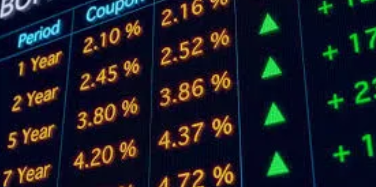
Why the U.S. Bond Market Matters
Share
The Bond Market: America’s Financial Backbone
The U.S. bond market, especially Treasury bonds, plays a huge role in both our country and the global economy. With a size of more than 29 trillion dollars, it is how the government borrows money and sets interest rates for things like student loans, mortgages, and credit cards. Treasury bonds are seen as super safe investments, so when investors get nervous, they usually buy them. But this only works if people trust the U.S. economy. In 2025, a lot of that trust has been shaken.
Tariffs and Their Ripple Effects
Earlier this year, the Trump administration announced big new tariffs, 145 percent on Chinese goods and 10 percent on everything else. These were meant to protect U.S. businesses and reduce reliance on foreign imports. But the results were not all good. Prices went up, inflation grew, and other countries started pushing back with their own tariffs. According to the Associated Press, consumer confidence hit the lowest level in five years. Almost a third of people expect hiring to slow down, and about half think we might hit a recession (AP News, 2025).
These trade policies have made investors nervous. When businesses face higher costs and supply chains are disrupted, they slow down investment and hiring. That uncertainty spreads fast, and one of the first places it shows up is in the bond market.
Bond Market Turbulence
The Treasury market is usually calm, but lately it has been the opposite. In one day, 2 year Treasury yields jumped 0.3 percentage points, the biggest move since 2008. This shows that investors are worried and demanding more return for short term bonds (CBS News, 2025).
This shift tells us that people are less confident in the government’s short term financial direction. While long term bond yields have stayed more stable, if inflation keeps rising and growth slows, we might see something called an inverted yield curve. That is when short term rates are higher than long term ones, and it has predicted almost every U.S. recession in the last fifty years.
Global Implications
What happens in the U.S. bond market affects the whole world. Other countries and foreign investors own a lot of U.S. debt. If they lose trust in the U.S. economy, they might stop buying Treasuries or even start selling them.
The Bank of England already warned that these U.S. tariffs could hurt global banks by leading to more loan defaults (Financial Times, 2025). Countries that borrow in U.S. dollars could see their debt costs rise. As U.S. bond yields increase, investors pull money out of other places, like emerging markets, and put it into safer American bonds. That makes it harder for other countries to grow.
A Barometer for Economic Health
One thing I have learned while researching this topic is that the bond market does not just react to the economy, it helps predict what is coming. Investors pay close attention to things like the yield curve, which shows how interest rates differ between short and long term bonds.
Right now, the big swings in the bond market reflect how unsure everyone is about where things are heading. A mix of rising prices, changing trade policies, and global tension is making it hard for investors to stay calm. That is why the bond market is being watched so closely, it tells us how people really feel about the economy.
Conclusion
The U.S. bond market is way more important than most people realize. It is a key part of how the government borrows money, how interest rates are set, and how investors around the world measure risk. As the U.S. makes major policy decisions like these new tariffs, the bond market reacts, and those reactions send signals that reach far beyond Wall Street.
Understanding what is happening in the bond market helps us understand what might happen next with the economy. That is why economists, business leaders are paying such close attention.